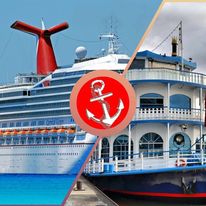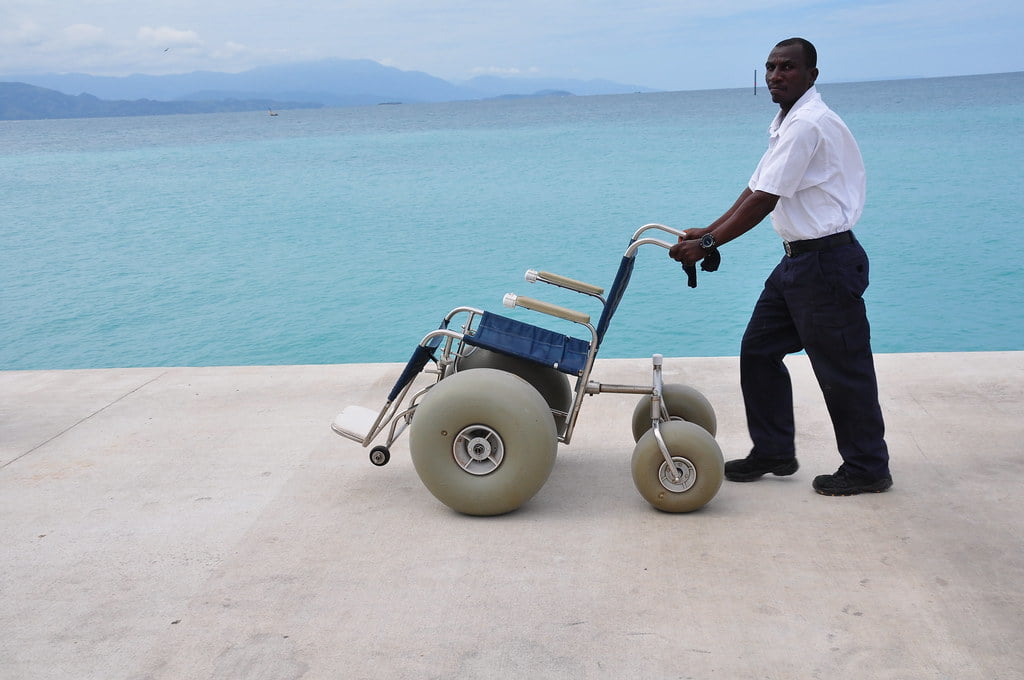River cruising and ocean cruising may share the commonality of being boat-based experiences on water, but the differences between them far outweigh the similarities. While ocean cruises are more widely known and often serve as a popular gateway to cruising, river cruises tend to pique people’s curiosity due to their relative rarity.
The most noticeable distinction becomes apparent as you approach the embarkation point. River cruise ships, as their name suggests, are designed to fit comfortably on a river, typically measuring between 300 to 400 feet in length. Their smaller size allows them to dock in compact areas.

If you’re embarking on a river cruise for the first time, you’ll be enchanted by these charming port destinations. In contrast, ocean-going cruise ships are much larger, often exceeding 1,000 feet in length. The distance between river cruise ships and ocean cruise ships is significant, with the latter being much larger in both length and height. While river cruise ships typically have about 4 decks, ocean cruise ships often have over 10 to 12 decks. As a result of their size, ocean cruise ships require larger ports to accommodate them.
Boarding an ocean cruise ship involves more formalities and procedures. This includes leaving your luggage with cabin number tags, going through document scanning at the terminal, and waiting for your boarding group number to be called. On the other hand, boarding a river cruise ship is much simpler. We can easily walk onto the ship and check in at the front desk. Although we have already submitted paperwork with passport information, we still need to provide that information to the staff once we are on board. Overall, the process is much less burdensome compared to boarding an ocean cruise.
With a modest number of approximately 200 attendees who must complete the check-in process, departing from a river cruise is a breeze. Simply inform the crew of your departure and effortlessly disembark with your belongings.
On the other hand, an ocean cruise entails a more intricate procedure. Hours prior to your departure, you leave your luggage outside your cabin for the crew to handle. Disembarkation, as well as embarkation, frequently follows a group-based system.
Cost comparison - river vs ocean cruises
In general, river cruises tend to be pricier compared to ocean cruises. However, when it comes to value for money, ocean cruises sometimes have the upper hand. Of course, determining the “value” factor is subjective and depends on personal preferences. Keep in mind that cost is just one aspect to consider when selecting a cruise that aligns with your desired vacation experience.
Ocean cruises often offer a la carte options for activities and beverage packages. On the other hand, river cruises typically include various amenities in the initial cost, such as complimentary beer and wine during lunch and dinner, as well as guided walking tours.
Both river cruises and ocean cruises frequently offer special promotions and deals for bookings.
Destinations
A fascinating aspect of river cruising lies in the ship’s capacity to dock in small towns and cities, offering a unique experience. While ocean cruises typically dock at large ports of call to accommodate their vast number of guests, river cruises navigate through charming towns in between major cities.
When ocean liners dock, these bustling ports are equipped to handle the influx of thousands of people, providing various activities, shopping opportunities, and dining options. In contrast, river cruises do not possess their own islands like some ocean liners do.
Both options have their merits, ultimately depending on personal preference. If one option becomes tiresome, it may be worthwhile to explore the other and embrace a new experience.


